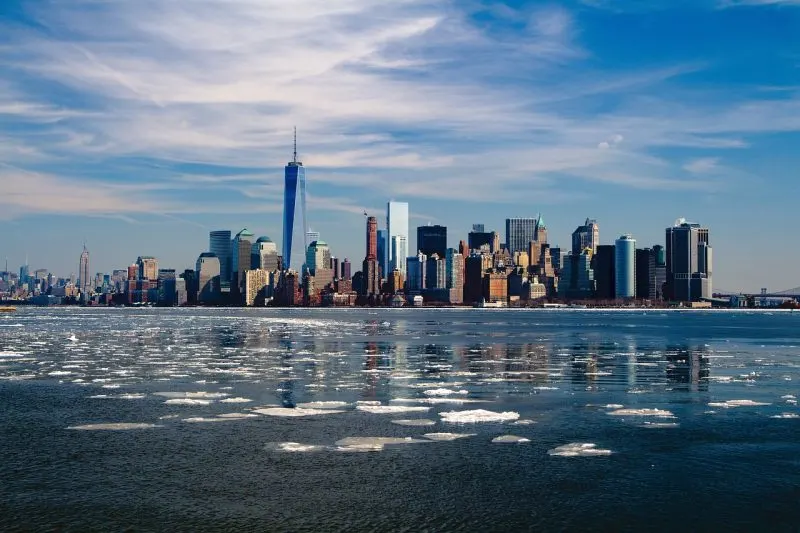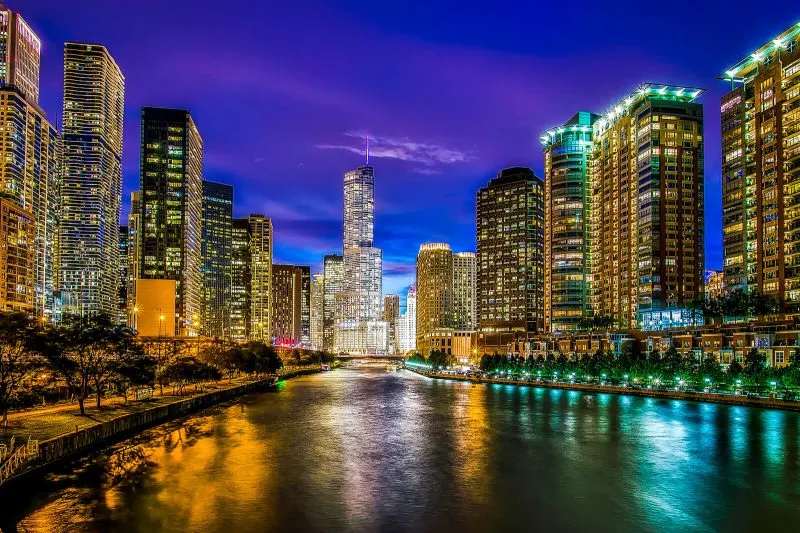Explore the Land of the Free Without the Keys
At first, starting on a month-long trip around the United States without the ease of a vehicle could sound intimidating.
A well-thought-out strategy and an adventurous attitude will help you fully enjoy the rich tapestry of American culture, scenery, and cities using the many public transit options available without a car.
This article will take you through the fundamentals of crossing the United States without a car, guaranteeing a hassle-free and exciting trip.

Embracing the Bus: Affordable and Widespread
Offering large networks linking key cities and even small communities, buses are the backbone of intercity transport in the United States. Operating routes all throughout the nation as well as into Canada and Mexico, Greyhound is a conventional carrier that stands out.
Their buses provide for luggage storage, free Wi-Fi, and power outlets, and come equipped with all three, so long trips are more pleasant. With prices for shorter flights beginning as low as $9.99, booking tickets in advance can result in notable discounts. A journey from Los Angeles to Las Vegas, for instance, may be about $25 if reserved early.
Particularly common on the East Coast, Megabus is another affordable choice. Renowned for their blue double-decker buses, they provide facilities including power outlets, free internet, and bathrooms. With some costs beginning at under $1 plus a booking charge, tickets can be very reasonable, particularly when reserved far in advance. Routes cover major cities such as New York, Atlanta, Boston, and Washington, D.C.
Known for its green buses, FlixBus runs all throughout the United States, Canada, and Mexico. They concentrate on routes to big cities and offer amenities, including free Wi-Fi, power outlets, and restrooms. A trip from Los Angeles to Las Vegas, for example, costs about $25.

Riding the Rails: Relaxing and Scenic Trips
Train travel in the United States combines comfort with scenic beauty in a special way. Particularly on western routes, Amtrak runs long-distance trains connecting big cities that provide stunning views. Often praised as one of the most gorgeous train rides in America, the Coast Starlight runs from Los Angeles to Seattle and offers sweeping views of the Pacific coast, rich woodlands, and towering mountains.
Although train prices can be more than buses, the ride is unmatched. A one-way ticket from New York to Washington, D.C. starts at $20; longer routes like Chicago to Los Angeles cost about $146. Managing costs efficiently can be aided by early booking and investigation of alternatives, including the USA Rail Pass.
Overnight train trips might be a great choice if you want anything other than aircraft for long-distance travel. Amtrak’s sleeper cars let you comfortably cover great distances and save on lodging expenses. Routes like the Empire Builder from Chicago to Seattle or the California Zephyr from Chicago to San Francisco take passengers through some of the most beautiful areas in the nation.

Urban Exploration: Carless City Navigation
Many major American cities have strong public transit networks, which help to make intra-city travel cheap and easy. For example, Boston’s Massachusetts Bay Transportation Authority (MBTA), fondly referred to as the “T,” provides boat, bus, and subway services throughout the city and its environs. Using resources such as the Trip Planner and registering for T-Alerts will improve your travel experience.
Likewise, the biggest subway system in the world run by New York City is the Metropolitan Transportation Authority (MTA), which is supported by comprehensive bus routes. A MetroCard allows for unlimited rides, hence enabling smooth discovery of the boroughs of the city.
In cities like San Francisco, the Bay Area Rapid Transit (BART) system, along with famous cable cars and buses, gives complete coverage, letting visitors easily traverse the rugged topography of the city and beyond.
Other cities, including Los Angeles, Washington, D.C., and Chicago also offer comprehensive transit choices. Key neighborhoods and outlying areas are linked by the “L” train system operated by the Chicago Transit Authority (CTA). The Metrorail and Metrobus networks in Washington efficiently connect government sites, museums, and lively neighborhoods. In Los Angeles, meantime, the Metro Rail system and a network of buses make carless travel quite possible even if the city is known for being car centric.

Efficiently Covering Great Distances: Air Travel
Domestic flights might be a sensible choice for larger distances, particularly if time is limited. The largest low-cost airline in the world, Southwest Airlines runs reasonably priced flights to 121 locations spread over Central America, the Caribbean, Mexico, and the United States. Especially considering other airlines that frequently impose extra costs, their prices cover two checked bags, a notable benefit. A one-way ticket from Los Angeles to San Francisco, for example, may be as cheap as $49 if reserved early.
Though they charge for extra services like carry-on baggage and seat selection, budget airlines like Spirit and Frontier still provide inexpensive choices. Air travel might be a feasible choice for crossing big distances if you often locate domestic flights for around $100 by booking well in advance and are flexible with travel dates.

Creative Ideas: Shipping Services and Car Relocation
Automobile relocation services offer an unusual yet fascinating way to cross the United States without automobile ownership. Many times, businesses want cars transported nationwide and provide drivers incentives to do so. This setup offers a reasonably priced way to travel between places with the freedom of owning a car. However, one must consider issues including time limits connected to such services, insurance coverage, and fuel costs to consider.
Sometimes even covering petrol expenses, some services connect travelers with cars needing delivery from one city to another. Although the locations might be few, this choice provides a different method to experience road-tripping around America at low cost.
On the other hand, if you wish to rent a car for certain parts of your trip but don’t want to pay rental costs in every state, you can rent a car for a longer period and use auto shipping services to move it around the country while you travel.
This could be more affordable than renting cars in other states and returning them. Many auto transport firms provide automobile shipping choices, letting you pick up your rental in one state, fly to your next location, and have the car waiting for you when you arrive. This approach lets you to skip tiring long-distance travels and offers continuity and flexibility.

Planning Your Trip: Advice for a Smooth Experience
- Booking in advance can result in notable discounts and improved seat choices using ticket acquisition for flights, trains, and buses.
- Use programs such as Citymapper and Transit App to navigate public transit networks, get real-time information, and properly plan journeys.
- To prevent unanticipated costs, be aware of luggage limits for every form of transportation.
- To guarantee a courteous and enjoyable trip, learn about local customs and etiquette connected with public transportation.
- To lower lodging costs and interact with people who may provide insightful travel advice, think about staying in hostels, Airbnb rentals, or using Couchsurfing.
- Many cities have pedestrian-friendly areas and bike-share schemes, so exploring neighborhoods at your speed is simple.
Final Thoughts: The Freedom of Car-Free Travel
Not only possible but also provides a different view on the many terrains and cultures of the United States, embarking on a 30-day trip without a car.
Travelers can see the U.S. in an economical, sustainable, and immersive way by using the vast network of buses, trains, urban transport systems, vehicle relocation services, and auto shipping choices. A car-free journey in America may be as exciting and fulfilling as any typical road trip, whether looking out of a train window at the Rocky Mountains, walking through a historic neighborhood, or jumping on a ferry to an island vacation.

